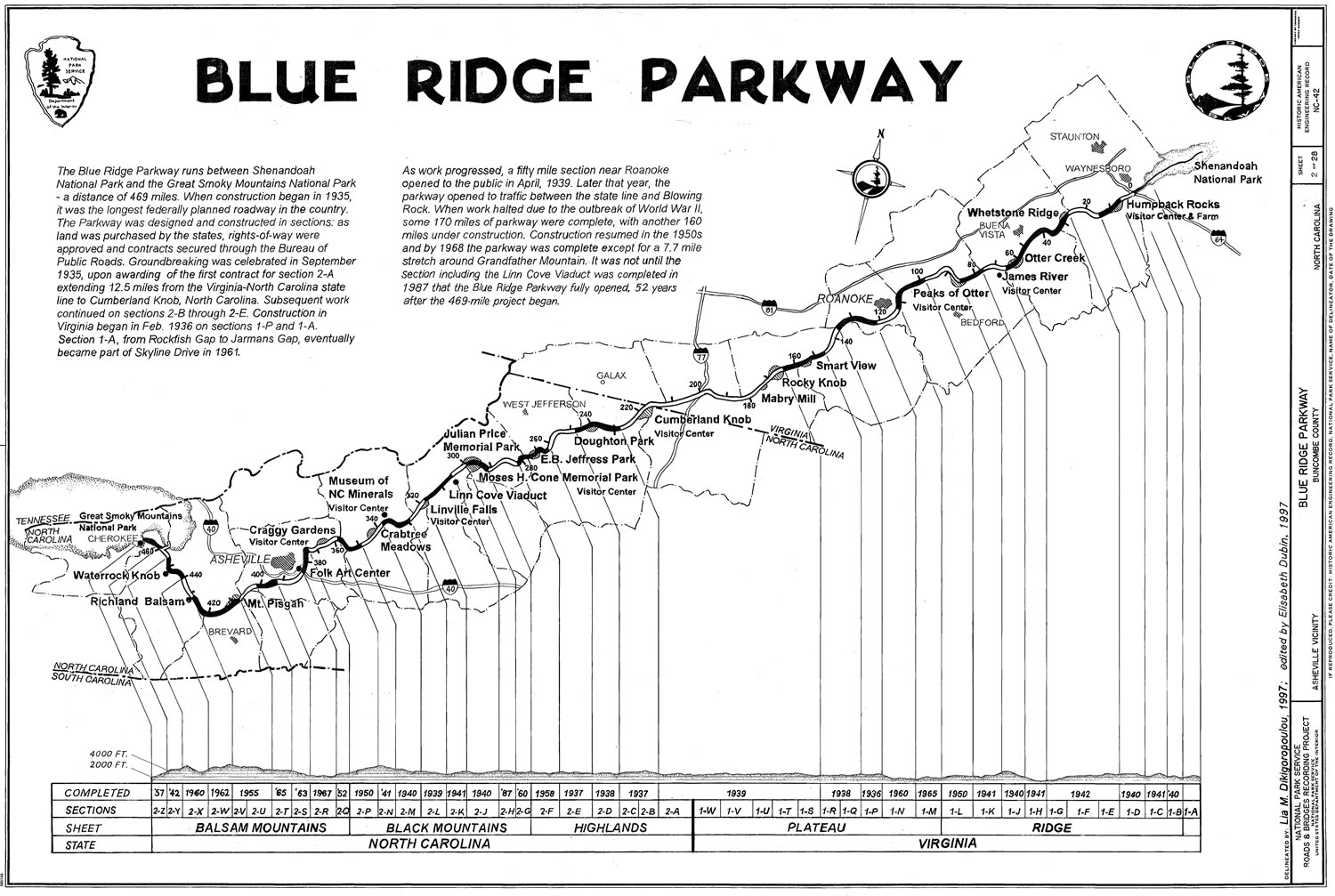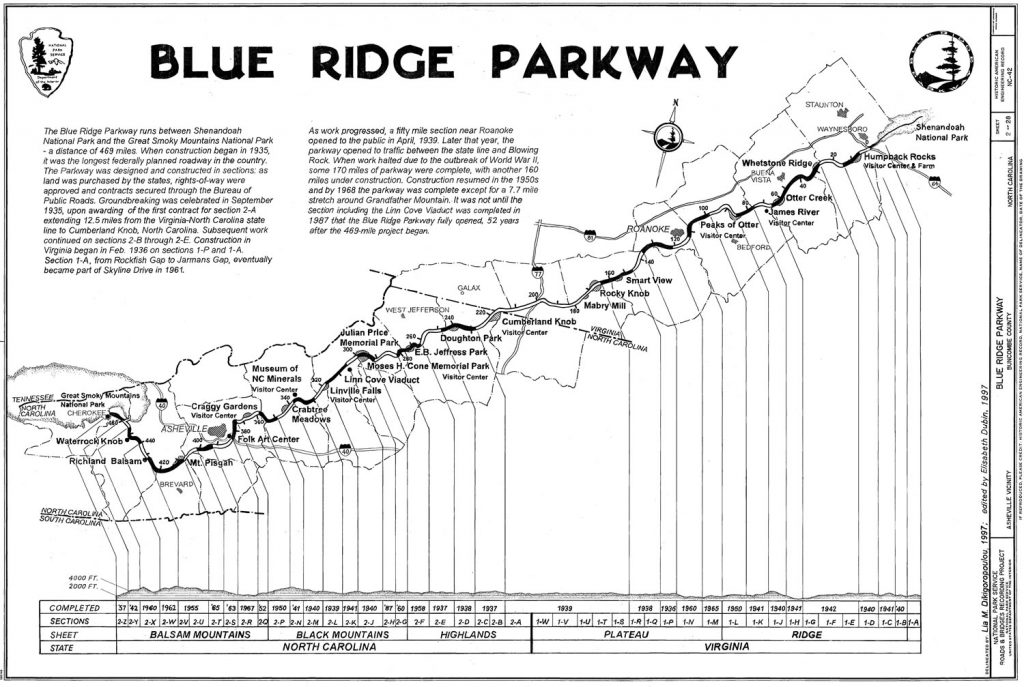The Blue Ridge Parkway runs between Shenandoah National Park and The Great Smoky Mountains National Park – a distance of 469 miles. When construction began in 1935, it was the longest federally planned roadway in the country.
The Parkway was designed and constructed in sections: as land was purchased by the states, rights-of-way were approved end contracts secured through the Bureau of Public Roads.
Groundbreaking was cerebrated in September 1935, upon awarding of the first contract for section 2-A extending 12.5 miles from the Virginia-North Carolina state line to Cumberland Knob, North Carolina. Subsequent work continued on Sections 2-B through 2-E Construction in Virginia began in Feb. 1936 on sections 1-P and 1-A. Section 1-A, from Rockfish Gap to Jarmans Gap, eventually became part of Skyline Drive 1961.
As work progressed, a fifty mile section near Roanoke opened to the public in April, 1939. Later that year, the parkway opened to traffic between the State line and Blowing Rock. When work halted due to the outbreak of World War II, some 170 miles of parkway were complete, with another 160 miles under construction. Construction resumed in the 1950s and by 1968 the parkway was complete except for a 7.7 mile stretch around Grandfather Mountain. It was not until the Section including the Linn Cove Viaduct was completed in 1987 that the Blue Ridge Parkway fully opened. 52 years after the 469-mile project began.



